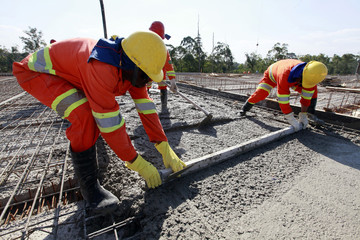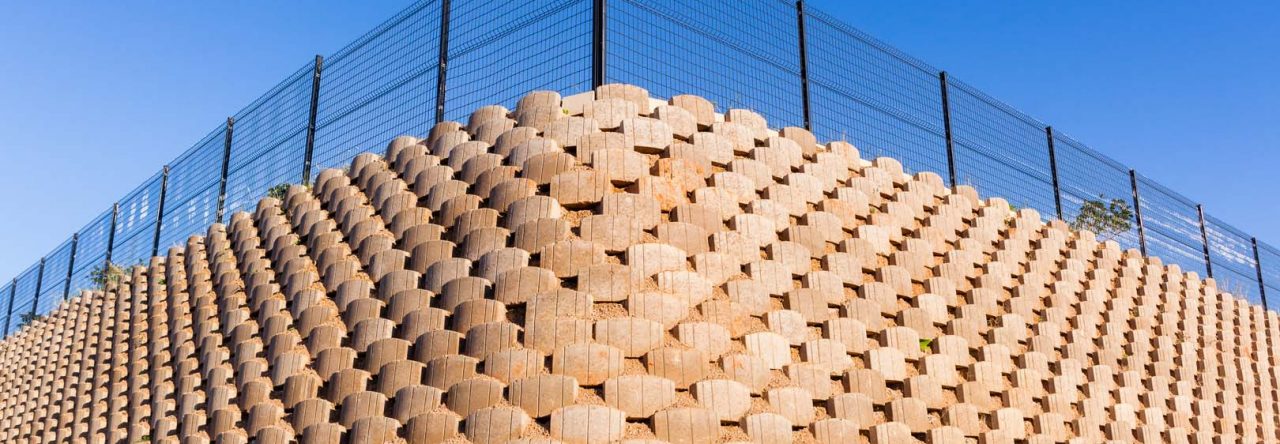Damaged concrete impacts the safety and performance of buildings, structures, and equipment. It’s important to hire a professional Concrete Repair Colorado Springs to repair concrete damages as soon as you notice them to prevent future problems.

Preventive maintenance addresses minor cracks, scuffing, and aging before they become larger issues that threaten the integrity of the concrete and the surrounding structures. This helps to reduce costs and save time.
Repairing Cracks
Concrete is a sturdy material, but time and natural forces can wreak havoc on it. This can result in cracking, deterioration, and structural issues. It is important to address these issues as soon as they develop to avoid further damage and prevent potential safety hazards.
Cracks can be repaired by filling them with a flexible urethane sealant, or by using a more permanent repair solution such as an epoxy resin. The best way to determine which method is right for you is to contact a professional concrete repair service who will be able to recommend the most suitable product for your specific needs.
When repairing cracks, it is important to use a concrete repair material that has similar mechanical properties to the base material. If the repair material has a different crushing strength, it can lead to non-uniform flow of stresses and strains which may cause the repair to fail prematurely. It is also a good idea to apply a surface coating over the repair once it has cured, this will provide additional durability and aesthetic appeal to the concrete.
Whether in an office building or commercial complex, damaged concrete can make your whole structure look old and worn out. This can affect your brand image and draw in fewer clients. If the damage is not addressed on time, it can also cost you more money in maintenance and repairs.
A reputable concrete repair service will ensure that your concrete is properly repaired to prevent future problems. This will not only improve the appearance of your property but also increase its value and longevity. This is a much better option than replacing the concrete, which can be an expensive project.
Damaged concrete can serve as a slip and fall hazard for everyone on your property. Children and elderly people are especially susceptible to injury from trips or falls on cracked surfaces. Taking care of these cracks early will help you save on medical costs in the long run and make sure that everyone on your property is safe. In addition to improving the appearance of your home, these concrete repairs can also protect your home from water leaks and radon gas.
Repairing Leaks
Concrete structures can seem intimidating. Most repairs to stairs, patios or walls give DIYers the impression they require the assistance of a professional, but with the right knowledge and Quikrete products, many concrete problems can be handled by the homeowner.
Water leaks can cause severe damage to concrete and a home’s support structure, especially if they go undetected for long periods of time. Depending on the extent of the damage, property owners may find themselves facing tens of thousands of dollars in damages.
One of the most serious and difficult problems to fix is a slab leak, which occurs when a plumbing line ruptures beneath the concrete foundation of a house. This can happen for a number of reasons: shifting soils putting pressure on the pipes, chemical reactions between metal plumbing lines and other materials in the ground, or aging pipes.
The first step in determining the cause of a slab leak is to locate the ruptured pipe, which can be tricky for plumbers since they work underground. They can use a variety of tools, including ground microphones, acoustic listening discs and thermal scanners, to locate the leak. Using a hammer to strike against the concrete can also reveal if there are any areas of delamination. Delaminated areas will ring hollow instead of the hard thud associated with sound concrete.
Once the location of the leak is determined, a repair can be made. The most common method for repairing slab leaks is a polyurethane crack injection system that uses a resin injected under pressure into the crack. This resin seeks out moisture and expands to fill the crack, creating a waterproof seal. It bonds to wet surfaces and cures into a flexible material that can withstand expansion/contraction movements without breaking the bond.
Another repair option is a steel pier system, which involves inserting hollow, precast steel pipe into the ground under a home. Then, a concrete cap is placed over the top and locked into place to create a solid surface that can support any structure. This system can be used to level homes, sheds and other concrete structures. It is also a good choice for stabilizing sagging foundations.
Repairing Slabs
Concrete slabs serve many purposes in homes and businesses, but they can also become damaged over time. Slab damage can lead to serious safety hazards and expensive repairs if not addressed promptly by a professional contractor. In addition, repairing damaged concrete slabs can help improve the appearance of a property and increase its value.
Slab repair is similar to resurfacing, but it involves the use of concrete mix that is compatible with the slab’s current material and has slightly better strength than the base material. This helps ensure a uniform flow of stresses and strains across the entire surface area. It also helps prevent premature failure of the repair.
Whether you need to repair a driveway, sidewalk, or other walkway, a concrete repair service can help. They will use high-quality materials and follow best construction practices to ensure a strong, durable repair that lasts. In some cases, they may even use a technique called feathering to lightly blend new concrete with the surrounding slab.
There are several different factors that can cause concrete to deteriorate and need repair, including weather changes, freeze-thaw cycles, chemical reactions, and ageing. These factors must be identified and addressed to ensure satisfactory results. Concrete repair services can offer a variety of solutions, from filling cracks to injecting epoxy into the concrete and even raising sunken slabs.
While it may seem counterproductive to spend money on repairing an existing structure, concrete repairs are often much cheaper than replacing the structure altogether. Moreover, they are faster and more cost-effective than traditional methods. In addition, they are more sustainable and eco-friendly.
Unlike replacement, which involves the removal and disposal of the existing slab and all of the contaminated materials, concrete repairs are typically done in-place, keeping native materials in place whenever possible. The concrete repair process is also cleaner than conventional methods, resulting in less debris and water runoff.
Although it may seem like a superficial decision to invest in concrete repair, it is an essential service that can save money and reduce risk. Cracks and other damage to concrete surfaces can affect productivity, be a safety hazard, and attract pest infestations. Choosing the right concrete repair solution can make all the difference in your building’s safety, security, and appearance, as well as its long-term durability.
Repairing Foundations
When a house’s foundation is showing signs of deterioration, a foundation repair service can be called to inspect the area and develop a plan for the needed repairs. Depending on the condition of the home, and the underlying soils, different techniques can be used to repair and restore the structure’s integrity.
One common repair technique involves installing steel piers that are driven or placed underneath the home to support it on solid ground. These piers can range in size from a few inches wide to many feet long and thick. The piers can be a lower cost alternative to concrete piles that are driven or placed into the ground. Whether concrete or steel piers are the best solution for your home depends on what type of soil is under it and other factors.
Another method for repairing the foundation is by digging down beneath the foundation and pouring new concrete. The new concrete can be a concrete slab or a concrete block poured into place. This can be a lower cost option than replacing the entire foundation. This is also a good method for repairing cracked walls and leaking basements.
The quality of the concrete used to build structures is a major factor in the lifespan of the structure. When the concrete starts to deteriorate, it is important to address the problem quickly. The deterioration can cause further damage to the structure, and can lead to costly repair work.
A concrete repair company can test the integrity of concrete with a number of techniques. These tests can help identify the underlying cause of the damage and determine what type of concrete repair methods should be used. For example, if the concrete has been damaged by corrosion of reinforcing steel, it is important to take steps to prevent further corrosion. This might involve using cathodic protection, chloride extraction or re-alkalization to arrest the corrosion process.
Other factors that can affect the quality of concrete include poor drainage and water runoff. Poor drainage can cause soil settlement over time, which can shift and crack the concrete. Water runoff can also cause erosion around foundations, which can weaken the structure. Both of these problems can be solved by implementing proper drainage systems and keeping debris and roots away from the foundation.
